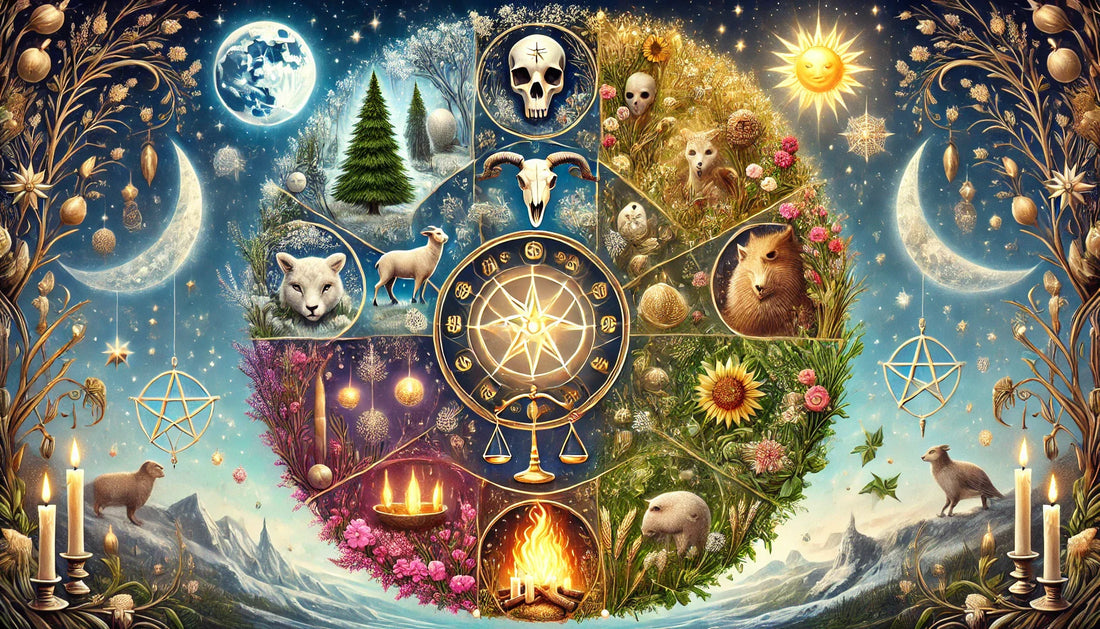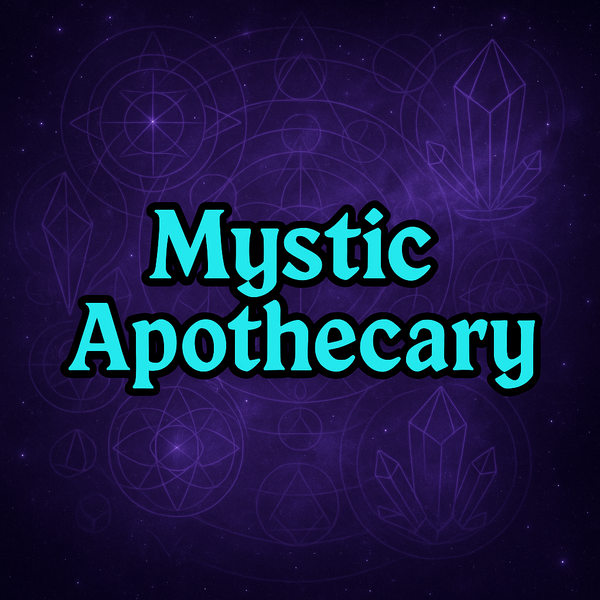
The Wheel of the Year: The Sacred Cycle of Nature
Cody ManesShare
The Wheel of the Year is a sacred cycle of seasonal festivals observed by many Pagans, Wiccans, and practitioners of earth-based spirituality. Rooted in ancient traditions, this cyclical calendar celebrates the changing seasons and the eternal dance of light and dark, life and death, growth and rest. Each festival within the Wheel honors a pivotal moment in the Earth's journey around the sun, offering an opportunity for connection, reflection, and ritual. By embracing the Wheel of the Year, practitioners attune themselves to the natural rhythms of the world, drawing wisdom and strength from the ever-turning tides of existence.
The Origins and Evolution of the Wheel
The concept of the Wheel of the Year finds its roots in pre-Christian agricultural societies that depended on the cycles of nature for survival. Ancient European cultures, particularly the Celts and Germanic tribes, observed key seasonal transitions marked by feasts, rituals, and ceremonies. These sacred days honored the forces of nature, deities associated with fertility and harvest, and the mysteries of life and death.
With the rise of modern Paganism and the revival of Wicca in the mid-20th century, the Wheel of the Year was formally structured into eight major festivals: the four solar festivals (solstices and equinoxes) and the four cross-quarter festivals that fall between them. Today, practitioners worldwide celebrate these sabbats, weaving together ancient customs, folklore, and personal spiritual practices to align themselves with the Earth’s cyclical energy.
The Spiritual Significance of the Sabbats
Each sabbat within the Wheel of the Year carries profound spiritual meaning, reflecting the eternal balance of light and dark, death and rebirth. These celebrations provide an opportunity to acknowledge the ever-changing energies of nature and our place within them. By engaging in ritual, meditation, and seasonal activities, practitioners strengthen their connection to the divine forces that govern life.
Samhain, often considered the Witch’s New Year, marks the thinning of the veil between worlds and honors ancestors. Yule, the Winter Solstice, celebrates the rebirth of the Sun and the promise of returning light. Imbolc heralds the first stirrings of spring, a time of purification and inspiration. Ostara, the Spring Equinox, welcomes balance and fertility, encouraging growth and renewal. Beltane, a fire festival of passion and vitality, embraces love, fertility, and abundance. Litha, the Summer Solstice, stands as a time of power and celebration as the Sun reaches its peak. Lughnasadh, or Lammas, recognizes the first harvest, a time of gratitude and preparation. Mabon, the Autumn Equinox, brings equilibrium once more, reminding us to reflect on our achievements and prepare for the coming darkness.
Emotional and Psychological Insights
The Wheel of the Year serves not only as a guide for ritual observances but also as a powerful tool for inner transformation. Each festival corresponds with phases of personal growth, emotional shifts, and the rhythms of daily life. By consciously engaging with these cycles, individuals can find deeper meaning in their emotions and experiences.
For example, Samhain’s introspective nature encourages the release of grief and old burdens, providing an opportunity for healing and closure. Yule offers hope in times of darkness, reminding practitioners that even in the coldest moments, light will return. Beltane ignites passion and creativity, while Mabon promotes balance and gratitude. Through these seasonal reflections, the Wheel of the Year becomes a mirror to the human experience, offering wisdom and guidance in navigating life’s joys and sorrows.
The Physical and Healing Aspects
The Wheel of the Year is inherently tied to physical well-being and natural rhythms. Aligning one’s lifestyle with the seasonal cycles can promote overall health, balance, and vitality. Many practitioners incorporate herbal remedies, seasonal foods, and grounding activities into their sabbat celebrations, embracing nature’s healing gifts.
Imbolc, for instance, is a time for cleansing both the body and the home, making it ideal for detoxifying practices and fresh starts. Lughnasadh emphasizes nourishment and gratitude for the abundance of the Earth, encouraging mindful eating and appreciation for seasonal harvests. Mabon’s focus on balance can inspire practitioners to assess their work-life equilibrium, while Ostara’s energy of renewal supports rejuvenation and self-care. By honoring these natural rhythms, the Wheel of the Year fosters a holistic approach to physical and spiritual well-being.
The Protective Power of the Wheel
Each festival within the Wheel of the Year carries protective qualities, reinforcing a sense of security and alignment with cosmic forces. Samhain, with its deep connection to the ancestors, offers protection through wisdom and guidance from those who have passed. Yule’s focus on the returning Sun brings hope and fortitude during challenging times. Beltane’s fires have long been used for purification and safeguarding against negative influences, while Litha’s solar energy strengthens personal power and resilience.
Rituals performed at these sacred times often include protective charms, blessings, and invocations to safeguard homes, loved ones, and personal endeavors. Many practitioners use the energy of Mabon and Ostara to set intentions for stability and growth, ensuring their spiritual path remains grounded and protected throughout the year.
Practical Applications in Modern Life
The Wheel of the Year is more than an ancient calendar—it is a living practice that can be integrated into daily life in countless ways. Simple rituals such as lighting candles on solstices, setting seasonal goals, cooking with local produce, or spending time in nature help to honor the changing energies of the seasons. Meditation, journaling, and personal reflections during each sabbat provide opportunities for spiritual insight and growth.
Many modern practitioners create altars decorated with seasonal symbols, work with deities aligned with each festival, or perform spellwork related to the energies present at each time of year. Whether through elaborate rituals or small, mindful observances, the Wheel of the Year offers a sacred framework for living in harmony with nature’s cycles.
Embracing the Eternal Cycle
The Wheel of the Year is a powerful spiritual guide, reminding us of life’s ever-turning nature. By celebrating its festivals, we honor the past, embrace the present, and prepare for the future with intention and awareness. Whether through deep ritual practice or simple seasonal mindfulness, walking the Wheel allows us to find meaning in each transition and recognize the beauty of the changing world around us. In turning through time, we find ourselves ever connected to the sacred rhythm of existence, forever moving with the dance of the Earth and sky.
